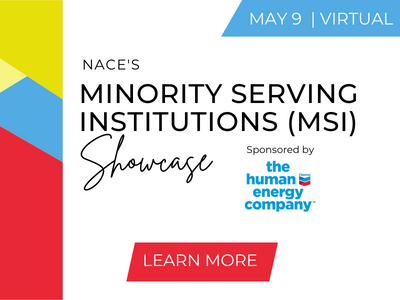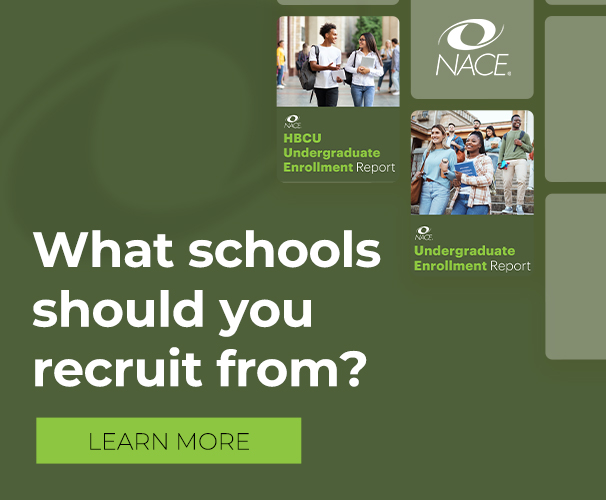Spotlight for Career Services Professionals
Collaboration among campus offices is a critical aspect in supporting students with disabilities during their search for employment.
“Career and disability services offices need to work together to support students with disabilities in their transition to work or these students will not have equal access to opportunities,” says Felicia Nurmsen, managing director of employer services for the National Organization on Disability (NOD).
Nurmsen says that students with disabilities typically receive great accommodations for their needs on campus through disability services.
“However,” she adds, “[disability services is] not working with career services offices to make students aware of the various opportunities for employment, educational resources to support resume development, and more. These offices often serve a larger number of students with limited resources. Therefore, the focus on success is rightfully with their academic goals. Ultimately, when we build a bridge with these two offices, we see greater success for students with disabilities using the career services office for transition to work.”
Nurmsen recommends that career centers provide training to their staff on interview skills, disability awareness, and accommodations to empower students to feel confident in all interview situations.
“By doing so, career services staff become comfortable advising students with disabilities on how to be successful in an interview,” she explains.
Nurmsen points to the additional steps identified by NOD to help career centers and disability services offices bridge the employment gap for graduating students with disabilities:
Collaboration and Communication
Career and disability services offices at colleges and universities should establish a working relationship based on the principles of collaboration and communication.
- Appoint a liaison from the career services office who is specially trained and understands the needs of students to work specifically with the disability office. This will ensure a comprehensive approach to addressing the job-search needs of students with disabilities, as well as employers looking to recruit students with disabilities.
- Create a voluntary release form for students to sign when registering with the disability office that gives permission to share the student’s name with the career services office.
- Implement a tracking system to retain students’ contact information (for those who have disclosed a disability and have given permission by signing a release form), to measure their progress toward employment, and to facilitate employer recruitment efforts. Such a database can provide career centers with an effective tool to quickly and easily identify students and post-graduate candidates with a specific skill set or area of study, giving employers a real-time talent assessment and a ready pool of qualified candidates. This can level the playing field for students with disabilities by allowing better access to employment opportunities, which are typically directed through career centers.
- Establish cooperative education programs to give students and school administrators the opportunity to test pilot the recruitment and application process before graduation. By identifying early on the hurdles faced by students with disabilities, universities have been able to address many barriers to entry, resulting in better employment outcomes for their students.
Information Sharing
Career and disability services offices should integrate disability-focused messaging into all recruitment outreach.
- Use mass emails and text messages to announce job openings to all students and create a special listserv to target students registered with the disability office.
- Create an online job board on both the disability and career offices’ websites and ask “disability-friendly” employers to announce that within their posting.
Education and Awareness
Public discussion to increase education and awareness is essential to promoting the inclusion of people with disabilities in all aspects of life, especially the workplace.
- Share statistics with all students, faculty, and staff about the number of students on campus with a disability. Be sure to provide information on apparent and non-apparent disabilities, and disability disclosure. Ensure that students are aware of the job resources available through the career center and disability services office, and remind them of the companies that promote “disability-friendly” working environments. This kind of outreach can be especially important for students with disabilities who have not disclosed their status and may encourage them to do so without fear of exclusion.
- Ensure that employers have an on-campus presence at recruiting events and workshops. Encourage them to identify themselves as “disability-friendly,” possibly through a symbol, e.g., a colored ribbon on a representative’s lapel or a sticker badge.
- Stay abreast of OFCCP regulations and the implications of the regulations for employers, as well as the opportunities they will provide for students with disabilities and the career offices that serve them. For more information visit www.dol.gov/ofccp.






